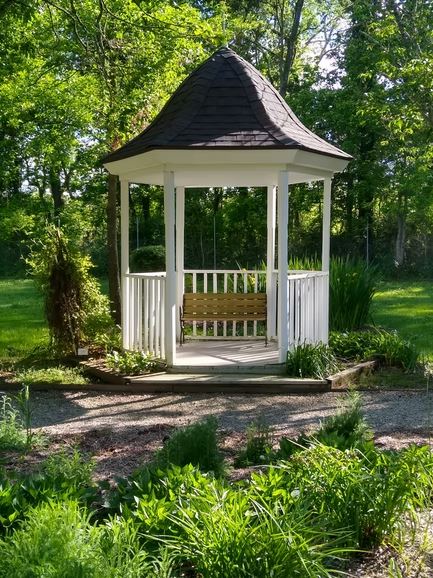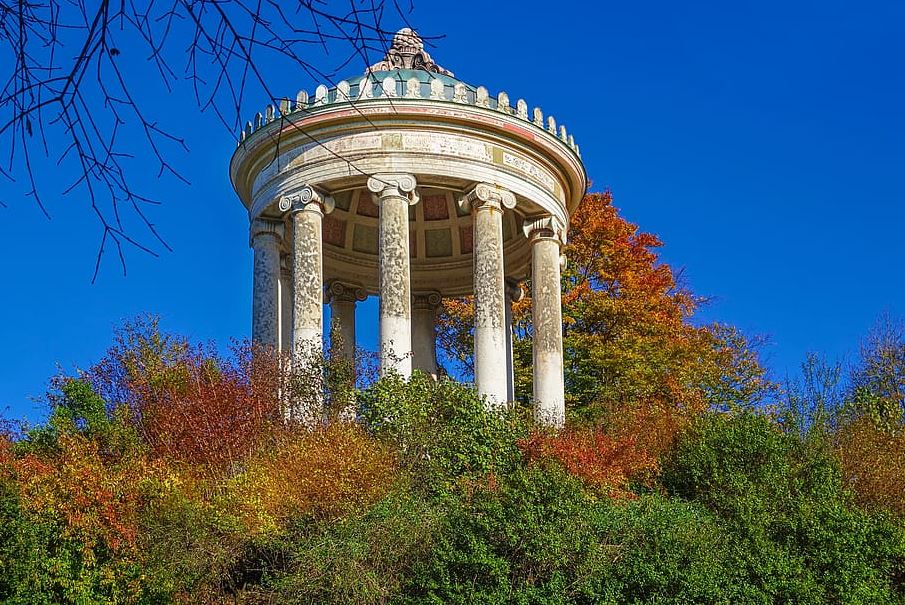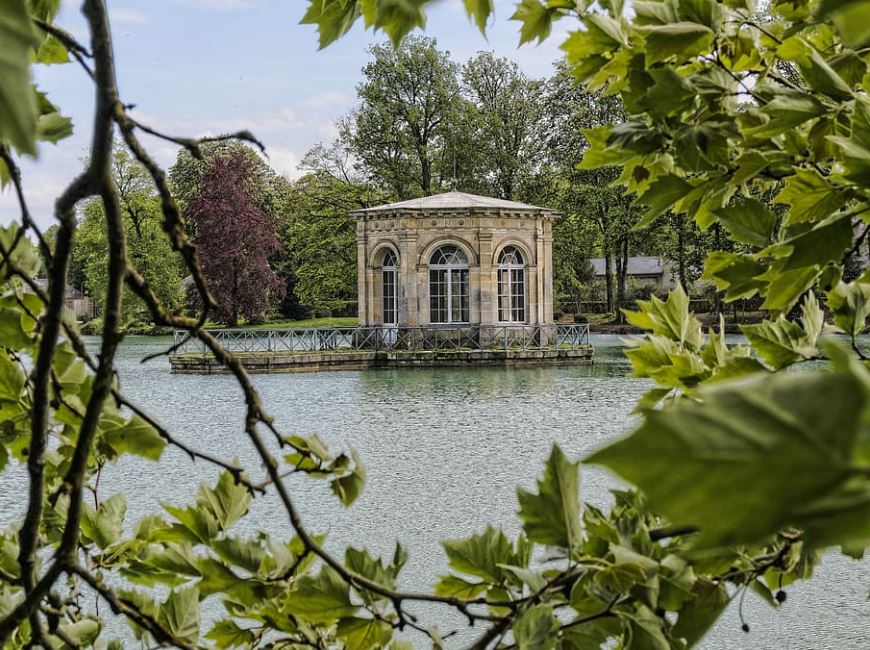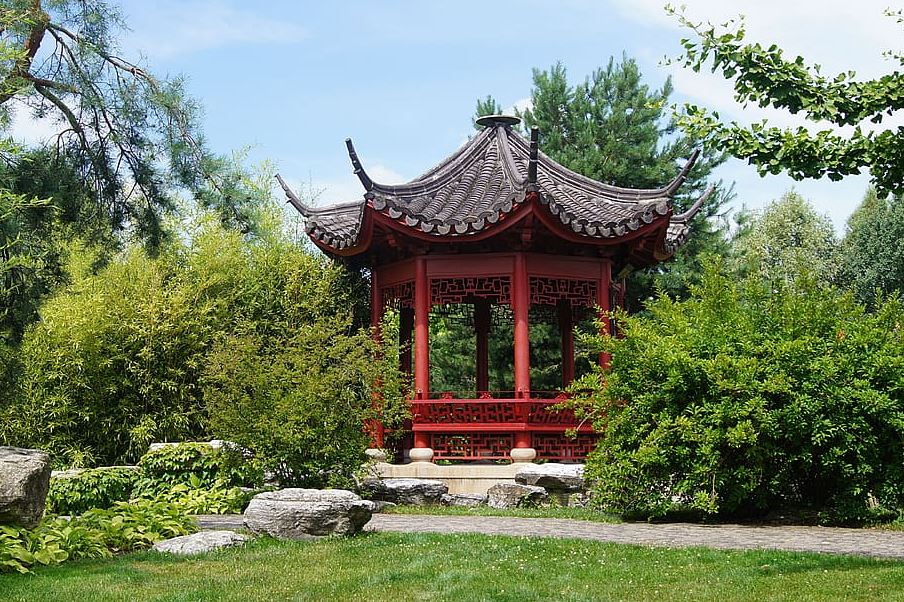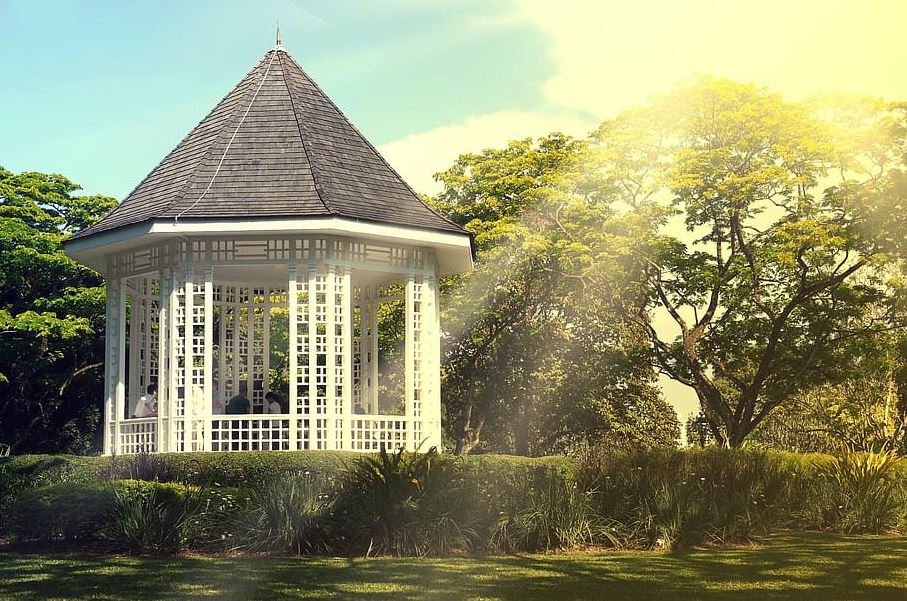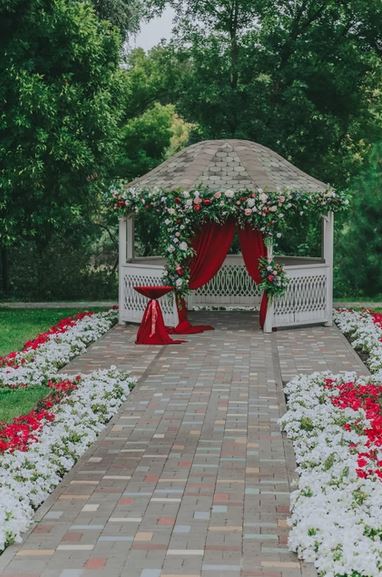Gazebos can add something special to your outdoor space. As well as it looks great, they also have a fascinating history behind them.
Gazebos have been a common fixture in gardens, parks, and outdoor spaces for centuries. Its roofed structure offers a welcoming place to stay to appreciate the open view of the surrounding area. It’s commonly used for entertainment and relaxation.
Originally, gazebos were referred to as kiosks, summerhouses, or screen houses, leading back to some of the earliest gardens. These free-standing structures come with pillars and a roof, and in some instances, decorative carvings or lattice can be found between the pillars. Most gazebos are octagonal in shape, with or without benches inside. The open sides allow the people to enjoy the breeze and the natural environment that surrounds the gazebo. Meanwhile, you can also check out the best online casino in Canada by clicking the link given.
Origin of the Word “Gazebo”
The word “gazebo” first appeared in England in about 1752, where it is believed to be a combination of the English word “gaze” and the Latin suffix –ebo, meaning “I shall.” Thus, gazebo means “I shall gaze.” This is the theory that considers the word “gazebo” as an etymological joke.
Another theory is that the word came from the French term “Que c’est beau,” which translates to “how beautiful. Pronounced with a nice French accent and spoken quickly, the original French phrase sounds like “gazebo.”
Whatever the real story is. Both terms are appropriate descriptions of a gazebo as it is used for decorating and beautifying a yard or a park, and it offers a nice view of the surroundings. And you can also click the following link to find out the best usa online casinos.
Earliest Gazebos in Egypt
Gazebos were common in Egyptian gardens as early as 5,000 years ago. As with most things, the members of the Egyptian royalty were the first to have them. In fact, many thought that gardens were heaven on earth and believed they could take it with them to the afterlife. To help the gods recreate their gardens, the Egyptians had the layout sketched in the murals on their tomb.
When an Egyptian wished to do so, it was customary to have the plans for their dwellings and a complete layout of the garden depicted in the murals in their tomb. Such murals that include gazebos have been found in tombs dating to 1,400 BC. The Ancient Egyptians recorded a stunning number of details about their lives in their tomb murals, which included detailed blueprints of gardens.
Gazebos in Ancient Rome and Greece
In ancient Greece and Rome, gazebo-like structures were built like small temples, usually made of marble. It was built to complement the better known or larger temple structures dedicated to or depicting their gods, as the gazebos often had statues of gods and goddesses in them.
Gazebos became popular in Rome and Pompeii as the population of Rome increased, and the wealthy citizens built stone gazebos near their houses and used them for socializing. During the summer, the wealthy Romans would go to their summerhouses and enjoy the view of the Mediterranean from their gazebos.
The wealthy Greeks didn’t display their wealth in private gardens but built public gardens around temples with gazebos nearby. Historians speculate that the Greeks used the public gazebos to discuss politics, philosophy, or socializing.
Gazebos in Ancient Persia
Persians are famous for their gardens, and opulent gazebos were added, often near pools or fountains. Located in the desert of modern-day Iran, the pools of water and lush gardens are considered engineering marvels. Their own forms of gazebos originate from Islamic architecture, called kiosks.
The Hanging Gardens of Babylon are hailed as one of the Seven Wonders of the Ancient World, and it’s beautiful. To water the garden, the Persians built a system of underground aqueducts that transported the melted snow from the mountains to the city of Babylon. Gazebos were constructed near the water using different styles, from simple tents to ornate structures. Persian Gazebos often use elaborate and geometric designs.
Gazebos in the 10th century Persia could range from tents with mats on the floor to two-story structures with cupolas, marble columns, silk fabric, and golden seats. Wealthy Persians would escape the heat in their two-story gazebos with viewing platforms and also use the gazebo to make business and sign treaties. These gazebos are sometimes built on marble floors cooled by a stream. According to historians, some Persians were even buried and entombed in their gazebo.
Gazebos in Renaissance Europe
During the 14th century, the French built four gazebos at the Louvre. These French-style gazebos influenced those in many other countries, including England, which became popular in the 15th century. In Elizabethan gardens, gazebos were used for entertaining, and they were commonly designed after the main house.
During the Renaissance, gazebos were built as shrines or places of meditation as they became popular in the gardens of monasteries.
In Italy, a form of gazebo called belvederes became popular during the Renaissance. It has structures similar to the traditional idea of the gazebo, and it even shares the same meaning – belvedere means “a beautiful view” in Italian. Belvederes had one or more open sides and a roof but were usually located on the top floor inside another building.
During the late 1700s, England and other parts of Europe incorporated Chinese-style summerhouses, which began popping up in gardens everywhere. This was the very fad that eventually led to the word “gazebo” when it entered the vocabulary in a 1972 book entitled “New Designs for Chinese Temples” by William Halfpenny, a prolific architectural writer, and his son named John.
Gazebos in China and Japan
China and Japan both have a long history of using small garden pavilions or teahouses in the garden, similar to the Western gazebo. The gazebos in China are often elaborate, while in Japan, simple teahouses were used in their tea ceremonies.
It’s believed that China began the trend sometime in the 4th century, and the use of these gazebos eventually spread to Japan.
Chinese garden temples were built of wood, which would withstand earthquakes but not fires. The elaborate designs incorporate Chinese art and iconography. Pagodas, which are a lot like gazebos, were made of wood and were painted in red, black, and gold. Gazebos and pagodas were used for worship and meditation in China. The elaborate Chinese-style gazebo began to expand to Europe during the late 18th century.
Meanwhile, in Japan, simple and minimalist gazebos were built and situated in the garden, away from the house, so they could find refuge and solitude. The style of Japanese gazebos was influenced by Zen Buddhists and was often located at Zen temples and rock gardens.
Early American Gazebos
Gazebos weren’t popular in America until the mid-1800s when the new middle class began to prosper. Gazebos declined in popularity at the turn of the century as houses were built with large decks or porches in the backyards. It was sometime around the 1930s when gazebos became popular again. Instead of making it a large public structure, Americans found that a gazebo could turn their backyard into a private haven. Apparently, there was no denying the advantage of having a quiet place to retreat from the chaos in the household. Gazebos were also viewed as status symbols.
During the 1940s, patios became more fashionable and edged out gazebos for a while, but sometime during the 1980s, new gazebos were being built by homeowners again.
Contemporary Gazebos
Today, gazebos come in different shapes , sizes, designs, and materials. It can vary from large to small, permanent to pop up. It’s also used for all sorts of purposes.
Large, public gazebos typically serve as bandstands, wedding venues, or concert locations. There are no fixed walls, but fabric or crawling plants are sometimes used as a temporary wall.
In homes, small backyard gazebos are placed as focal points in the garden. Some people install a ceiling fan , some people use it to house their backyard grill, while some even install a hot tub. Large gazebos are often used as a gathering place for house parties.

